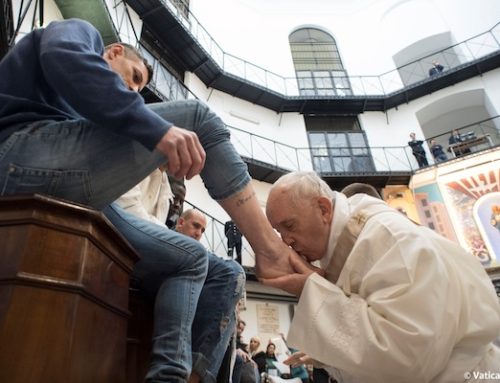An op-ed piece on Mary and the Annunciation?
An excerpt, by Matthew J. Milliner, an art historian at Wheaton College, who suggests some things men can learn from Mary:
The Annunciation…is the hammer that smashes patriarchy. There is good reason, therefore, that the priest Zechariah is forced into silence in Luke’s account of the months before Jesus’s birth (Luke 1:20), while Elizabeth and Mary, by contrast, shout to the Lord (Luke 1:42; 46).
That having been said, “Mary is for both men and women,” as my colleagues Amy Peeler and Jennifer McNutt have asserted, and both sexes can take her as their model. The history of art makes this perfectly clear. While in his twenties, Michelangelo gave us the traditional “Pièta” (1498-99). In his wiser seventies, through his self-portrait as a Nicodemus in the “Florentine Pièta” (1547-55), the artist took Mary’s place himself. Or consider Rembrandt’s Holy Family (1633), where a basket is placed by Joseph as if to imitate a womb. Beautifully enough, even Jesus and God the Father take on Marian roles in the history of Christian art.
In Orthodox icons of Mary’s Dormition, Jesus cuddles the swaddled soul of his mother, just as his mother once cuddled him. In “Gnadenstuhl” (Throne of Grace) images, God the Father embraces his dead son in the same way that Mary does in the more famous Pièta. The current El Greco show at the Art Institute of Chicago contains perhaps the most famous of such images (“The Trinity,” 1577-79), but it cannot be understood apart from El Greco’s image of Mary holding her dead son (“Pièta,” 1575) that the artist painted first. The Marian male tradition continues in contemporary art as well. Kehinde Wiley (“Mary, Comforter of the Afflicted,” 2016) fuses the Pièta and Black Madonna traditions by giving us a black man holding his dying son. Such images offer an antidote to unhinged masculinity far more potent than any shaving cream commercial.
… God became human once, for all, in the womb of Mary. Then, through the Eucharist, he enters human bodies over and over for as long as time endures. Should these bodies lack a functional womb, or if they are, like all of us, broken, afraid, weary, sinful — this is no impediment. Mary may have been first, but all are invited to follow.





